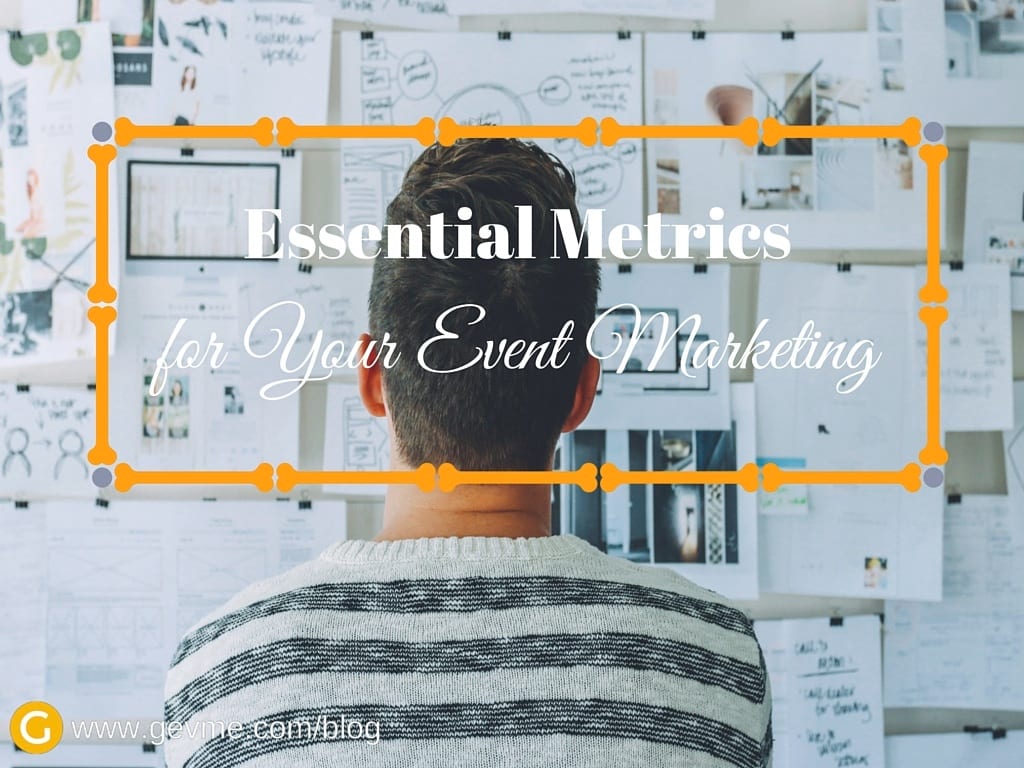Anyone who’s worked in marketing knows the importance of marketing metrics: cost per acquisition, number of leads gained per campaign, traffic and conversion rate, etc. The Internet has made marketing far more measurable and accountable. As a result, marketing professionals are now required to be well-versed in analytics. Yet many marketers with years of experience still find themselves struggle with numerous metrics for different kinds of marketing. (In fact, Chiefmartec listed out 131 different kinds of marketing). Mastering different sets of metrics is key to a successful marketing campaign. As for event marketing, there are a certain number of things you should always keep watching before, during, and after an event. Here come the essential metrics for your event marketing. Trust me, just a few.
#1 How well your targeted message was received?
For any marketing campaign, we need to craft a message to our target audience. We expect the audience to be receptive, attentive, and most importantly, take action upon the message. In the case of an event, to find out whether your message was well received, you will need to know some data:
-
Number of Registrations
This is obvious. When a registration occurs, it means your message is well delivered and the prospect takes action. However, a stand-alone number doesn’t mean anything. Compare it to your expected number and past event statistics.
-
Registration Sources
You will definitely want to know how people signed up for your event. Did they sign up through the newsletter or a Facebook advertisement? Knowing this, you will be able to tweak your message or change marketing channels. I use Google URL Builder to track the variations.
-
Registration Time
Did you offer Early Bird tickets? Then you should expect a surge in registration before the promotional period ends. Were there more people signing up after a LinkedIn discussion that mentioned your event? Sometimes, it’s pretty tough to monitor a slight increase in ticket sales, say, after a blog post is live, but this information will certainly help to plan the release of information in critical timing.
#2 How well did you engage with attendees?
-
Actual Attendance Rate
As we explained in another article 5 Tips to Avoid No-Shows at Your Next Event, attendee engagement has a lot to do with a high turnout on the day of event. Part of the marketing today is creating conversation. Marketing nowadays is no long one-way information pushing but more about interaction. This could take the form of email reminders, social media notifications, or push notifications from your event wallet.
-
Mentions on Social Media
I still remember my first internship in marketing communications where I learned how to do media monitoring. Back then, media meant newspapers, magazines and a few popular online news websites. So my job was to measure the length and width of an article in a newspaper with a ruler and calculate its worth. Today as a millennial marketer, I learned a new marketing metrics: social listening. For instance, you will count the number people use your event’s unique hashtag on Twitter. Are attendees posting quotes from speakers who inspired them? Or are they complaining that the event was boring? Are they posting photos of themselves at an exhibitor’s booth?
It’s best to have a social listening dashboard. Some tools that might help you are Socialbakers, Mention, Sprout Social, and Hootsuite.
#3 Did you get the right audience?
As they often say, quality beats quantity. It’s important to assess your types of attendees based on the goal of your event.
-
Number of quality leads
-
Partnership opportunities
-
Deals closed
If your event was attended by exhibitors / partnering companies, you will need to track their statistics in addition to yours. However, oftentimes a sales cycle is long and partnership opportunities are not immediately fully realized. So if you want to measure these metrics in dollars it will take you a significant period of time to keep coming back and review.
#4 ROI
-
Cost per attendee
This is to measure how much you paid to acquire an attendee. You can calculate the cost simply by dividing the event marketing cost by the number of attendees. This metric can be used to let you know whether or not your event marketing is cost effective based on how many people it can bring to the event.
-
Marketing Expense To Revenue Ratio
This ration will indicate your marketing efficiency in terms of gaining revenue. It is calculated by dividing the total marketing expenses of an event by the total revenue directly generated from that event. For events that don’t directly generate revenue, you might estimate the revenue expected to gain from the awareness or networking opportunities.
#5 The Feedback: Post-event Survey Responses
Well, this is not exactly counted as a metric. However, it is very helpful to know if your attendees were satisfied with their experience and if they plan to return next time. Chances are not many people will give you detailed feedback, so you might want to go the extra mile to craft a nice survey and invitation to take it.
We have some tips for you here in this article: Evolve Your Event Surveys and Boost Attendee Response Rates.
That’s it. There’re actually more ways to measure the success of event marketing but those above are the essential metrics that you shouldn’t neglect. Are you using the same metrics? What are the pros and cons of using them? Let us know in the comments.








